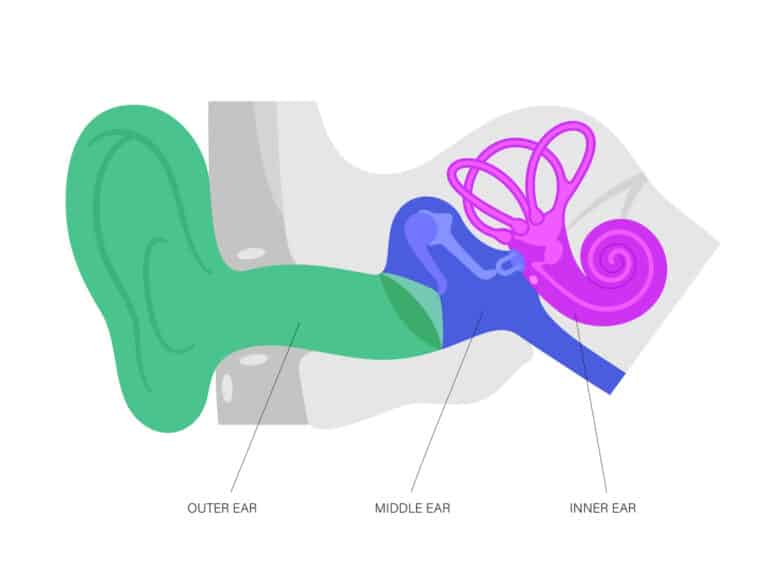Your ear has three main parts: the outer ear, middle ear and inner ear, each playing a key role in how you hear.
The Outer Ear
The outer ear, also called the auricle or pinna, is the visible part of your ear made of ridged cartilage covered by skin and earwax-secreting glands. Its job is to collect sound waves and guide them through the ear canal to the eardrum. For example, when a dog barks at Delthorne Park, it creates sound waves that travel through the air to the outer ear, which collects and sends them into the ear canal.
The Middle Ear
When sound enters the ear canal, it causes the eardrum, a dime-sized piece of tissue between your middle and outer ear, to vibrate. Three tiny bones in the middle ear called the malleus, incus and stapes amplify these vibrations before sending them through the inner ear’s oval window, a membrane-covered opening.
The Eustachian tubes, responsible for balancing pressure in your ears, also live in the middle ear. While they don’t help sound move through your ears, blocked Eustachian tubes can lead to ear infections that muffled hearing.
The Inner Ear
After the amplified vibrations travel through the oval window, they move into the cochlea, a snail or spiral-shaped organ in the inner ear. The cochlea is full of fluid and lined with nerve endings, also called hair cells. When the vibrations enter the cochlea, they cause the fluid inside to move. As the fluid moves, it stimulates the nerve endings. The stimulated nerve endings turn the fluid vibrations into electrical impulses that travel along the auditory nerve to the brain.
The semicircular canals, or labyrinthine, also live in the inner ear. Although they do not affect hearing, they help you stay balanced. Because the balance and hearing mechanisms share space, it’s common for conditions that inflame the inner ear, like labyrinthitis, to result in both hearing loss and balance issues.
What Can Disrupt Hearing?
Anything that disrupts the normal function of the middle or inner ear can lead to temporary or permanent hearing loss. A couple of things that can cause hearing loss include:
- Aging
- Loud noise exposure
- Ototoxic medications (medications that damage the inner ear)
- Physical trauma
- Ruptured eardrum
- Ear infections
- Eustachian tube dysfunction
- Blocked earwax
- Otosclerosis (abnormal bone remodeling)
- Labyrinthitis
If you notice symptoms of hearing loss, like trouble understanding speech, contact Torrance Audiology today to schedule a hearing test with one of our specialists.

